How to Make a Snake Plant Bloom (Rare Phenomenon)
Snake plants (Sansevieria) are known for their hardy, drought-tolerant nature and upright, architectural leaves. While these low-maintenance succulents rarely flower indoors, with the right care and conditions it is possible to encourage blooming. In this blog post, we’ll share tips and tricks to get your snake plant to produce its unique, fragrant flower clusters. From proper lighting and temperature to watering and fertilizing techniques, follow these steps to unlock your snake plant’s flowering potential.
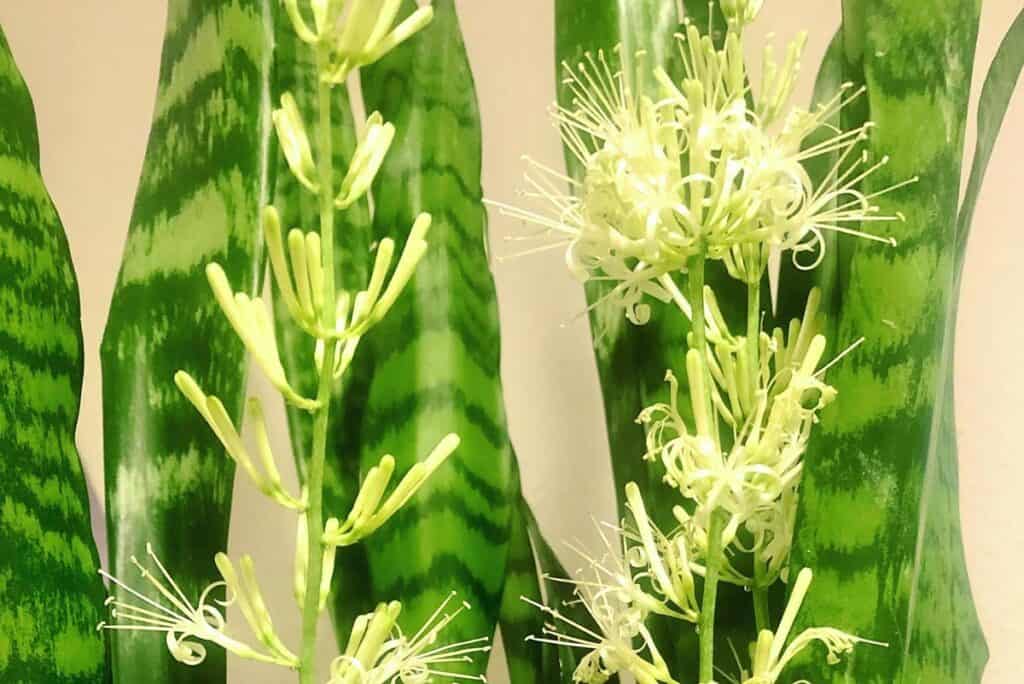
Contents
Understanding Snake Plant Flowering
Snake plants, known for their striking vertical leaves, rarely bloom in indoor environments. When they do flower, it’s a special event that often surprises plant owners. These blooms typically appear in late spring or early summer, emerging as tall spikes with small, fragrant flowers. The blossoms are usually greenish-white or pale pink and can last for several weeks.
To encourage flowering, you’ll need to recreate conditions similar to the plant’s natural habitat. This means providing bright, indirect light and allowing the soil to dry out between waterings. Snake plants prefer to be slightly root-bound, so don’t rush to repot them. They also benefit from a period of cooler temperatures and reduced watering during winter. While you can’t guarantee blooming, understanding these factors will help you create an environment where flowering is more likely to occur.
Optimal Light Conditions
In order to encourage blooming, providing your snake plant with essential light conditions is crucial. Snake plants thrive in bright, indirect light, but they can tolerate low light conditions as well. To promote flowering, place your plant near a window that receives plenty of natural light throughout the day. East or west-facing windows are ideal, as they offer the right balance of light intensity without scorching the leaves.
If you’re unable to provide adequate natural light, consider using artificial grow lights to supplement. Position the lights about 6-12 inches above the plant and keep them on for 12-14 hours daily. Remember, while snake plants can survive in low light, they’re less likely to bloom in these conditions. By optimizing light exposure, you’ll increase the chances of your snake plant producing its elegant, fragrant flowers.
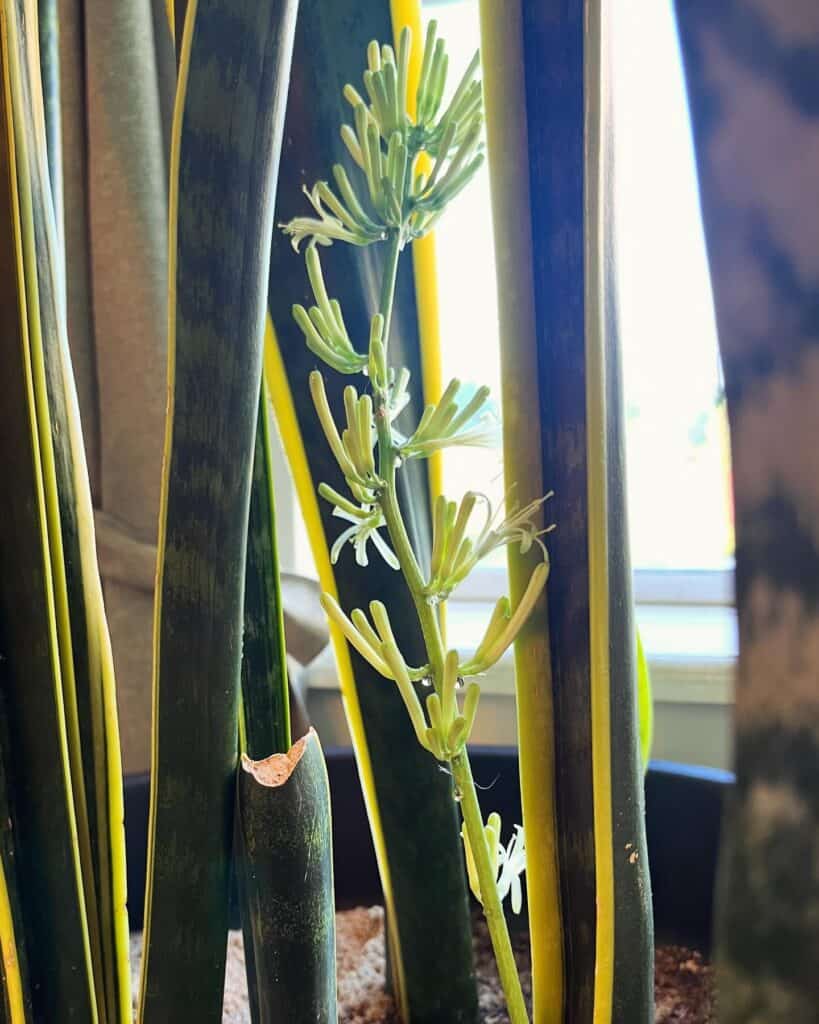
Watering and Humidity Requirements
When it comes to watering and humidity, snake plants prefer to be on the drier side. Allow the soil to dry out completely between waterings, which may mean watering only once every 2-3 weeks. Overwatering can lead to root rot, so it’s better to underwater than overwater. During winter, reduce watering frequency even further.
Snake plants thrive in average room humidity, so there’s no need for special humidifying measures. In fact, they can tolerate low humidity environments quite well. If you live in a particularly dry climate, you can mist the leaves occasionally, but this isn’t necessary for most situations.
To encourage blooming, maintain a consistent watering schedule and avoid sudden changes in humidity. Remember, a slightly stressed plant is more likely to bloom, so don’t worry if you forget to water it occasionally.
Soil and Fertilization
The foundation of a thriving snake plant lies in its soil and nutrition. Choose a well-draining potting mix designed for succulents or cacti to prevent waterlogging. You can create your own by combining equal parts potting soil, coarse sand, and perlite. This mixture guarantees proper aeration and drainage for your snake plant’s roots.
Fertilize your snake plant sparingly, as they’re adapted to poor soil conditions. Apply a balanced, water-soluble fertilizer diluted to half-strength once every 2-3 months during the growing season (spring and summer). Avoid fertilizing in fall and winter when the plant’s growth slows. Over-fertilization can lead to leggy growth and reduce the likelihood of blooming. If you notice salt buildup on the soil surface, flush the pot with distilled water to remove excess nutrients. By providing the right soil and nutrition, you’ll create an environment that encourages your snake plant to thrive and potentially bloom.
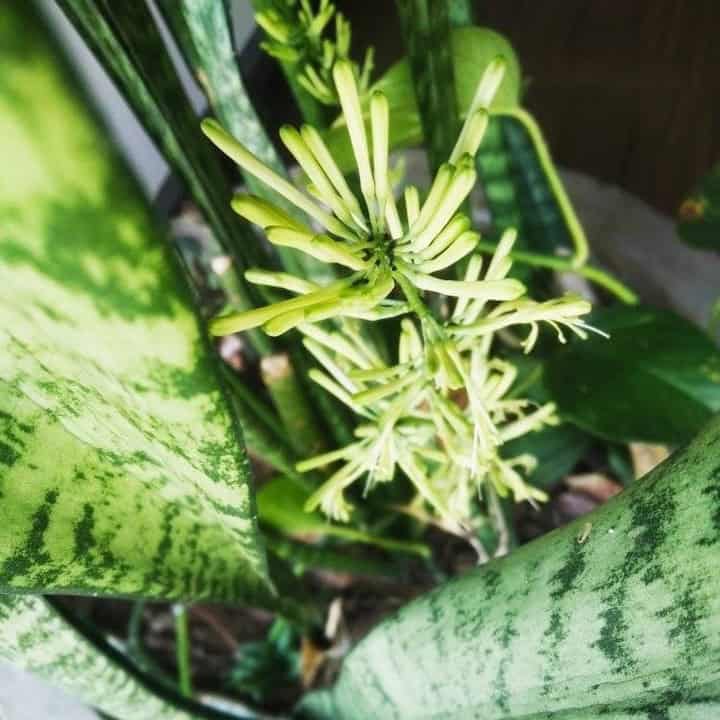
Temperature and Seasonal Changes
Understanding temperature requirements and seasonal changes is essential for encouraging your snake plant to bloom. Snake plants thrive in temperatures between 70-90°F (21-32°C) during the day and 50-70°F (10-21°C) at night. They can tolerate brief periods of cooler temperatures but may suffer damage below 50°F (10°C).
To promote blooming, provide your snake plant with a period of cooler temperatures in winter, around 55-60°F (13-16°C). This mimics their natural habitat and can trigger flowering. During this time, reduce watering and fertilization.
In spring, gradually increase temperatures and resume regular care. The change in conditions can stimulate blooming. Remember that snake plants are adapted to seasonal fluctuations, so allowing them to experience these changes can encourage flowering and overall health.
Maturity and Growth Cycle
Snake plants typically need to reach maturity before they’re capable of blooming, which can take several years. Your patience and care during this growth period are indispensable for encouraging future blooms. As your snake plant matures, it’ll develop a stronger root system and more robust foliage. This process can’t be rushed, but you can support healthy growth by providing ideal conditions.
Pay attention to your plant’s growth cycle, which includes periods of active growth and dormancy. During active growth, usually in spring and summer, provide slightly more water and fertilizer. In dormancy, typically fall and winter, reduce watering and halt fertilization. This mimics the plant’s natural habitat and helps prepare it for potential blooming. Remember, even mature snake plants may not bloom every year, so focus on overall plant health rather than solely on flower production.
Stress and Blooming Triggers
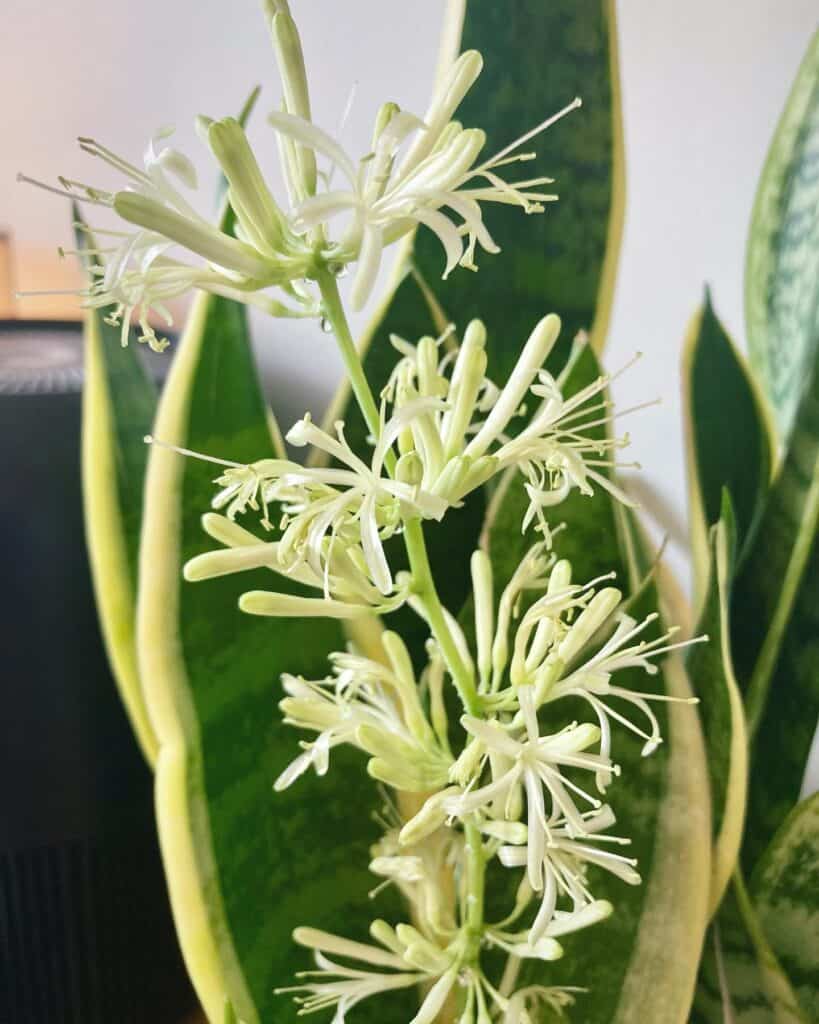
Contrary to what you might expect, stress can actually trigger blooming in snake plants. To encourage flowering, you can create controlled stress conditions for your plant. Slightly reduce watering frequency, allowing the soil to dry out more between waterings. Introduce temperature fluctuations by placing the plant in a cooler area at night. Limit fertilization, as nutrient deficiency can stimulate blooming. Provide bright, indirect light for longer periods, mimicking longer days. Root-bound conditions in a snug pot can also trigger flowering, so avoid repotting for a while. Remember, these stressors should be mild and temporary to avoid harming your plant. By carefully applying these techniques, you’re serving your snake plant by helping it reach its full potential and possibly rewarding you with its rare and beautiful blooms.
Pruning and Maintenance
While stress can stimulate blooming, proper pruning and maintenance are key to keeping your snake plant healthy and attractive. Regularly remove any dead, yellowing, or damaged leaves by cutting them off at the base with clean, sharp scissors. This promotes new growth and prevents disease spread. Dust the leaves gently with a damp cloth to keep them clean and able to photosynthesize efficiently. Repot your snake plant every 2-3 years or when it outgrows its container. Use well-draining potting soil and a pot with drainage holes. When repotting, you can divide the plant to create new ones, which is an excellent way to share with friends or expand your collection. Remember to water sparingly, allowing the soil to dry completely between waterings. Overwatering is the most common mistake in snake plant care, so err on the side of underwatering.
Common Obstacles to Flowering
Several common obstacles can prevent your snake plant from flowering. Insufficient light is a primary issue; snake plants need bright, indirect light to bloom. Overwatering can also hinder flowering, as it leads to root rot and stress. Conversely, underwatering causes dehydration, preventing the plant from allocating resources to flower production.
Nutrient deficiencies, particularly lack of phosphorus, can impede blooming. Using the wrong fertilizer or over-fertilizing may result in lush foliage but no flowers. Temperature fluctuations or consistently cool conditions can also discourage flowering. Pest infestations or diseases stress the plant, redirecting energy away from flower development.
Lastly, immaturity is a factor; snake plants typically need to be several years old before they’re capable of flowering. By addressing these obstacles, you’ll increase the likelihood of your snake plant producing its rare and beautiful blooms.
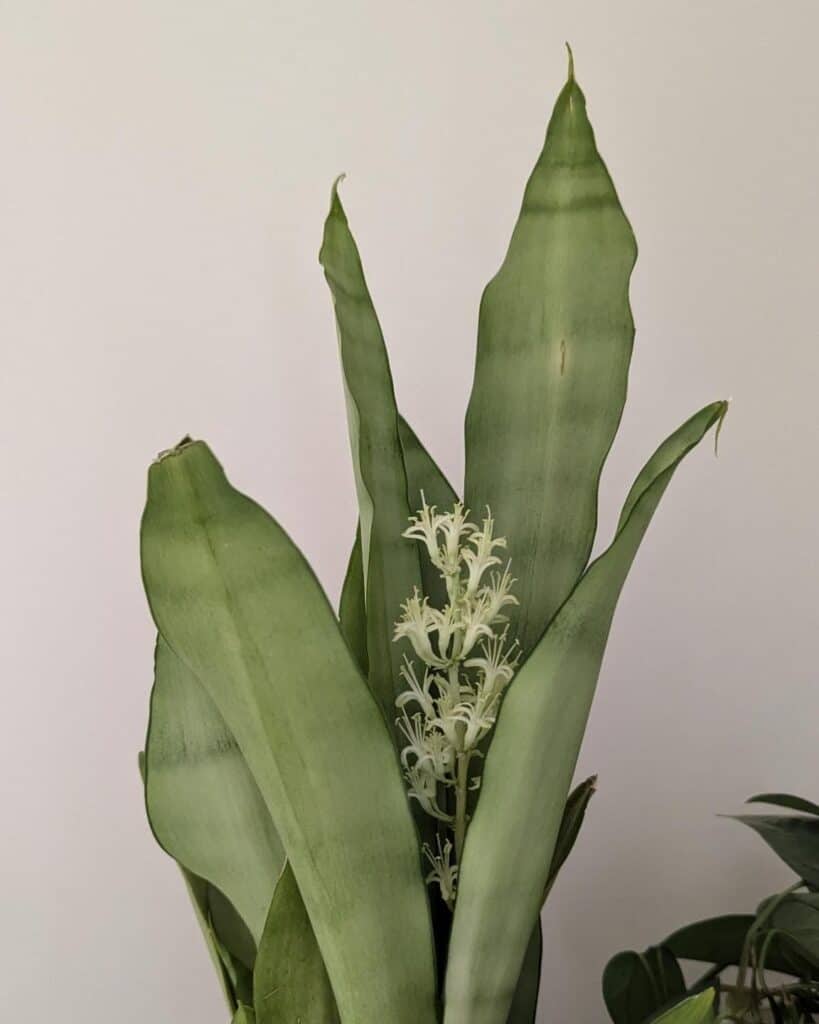
Patience and Persistence
Encouraging your snake plant to bloom requires a healthy dose of patience and persistence. Remember that these plants typically flower only when they’re mature and under ideal conditions. It may take several years before you see any blooms, so don’t get discouraged if your efforts don’t yield immediate results.
Stay committed to providing the best care possible, even when progress seems slow. Consistently maintain proper light, water, and nutrient levels. Monitor your plant for signs of stress or disease, addressing issues promptly. Keep adjusting your care routine based on your plant’s response.
If you’ve been nurturing your snake plant for years without seeing flowers, don’t give up hope. Sometimes, a slight change in environment or care can trigger blooming. Your dedication to your plant’s well-being will ultimately pay off, whether through flowers or simply a thriving, healthy specimen.
